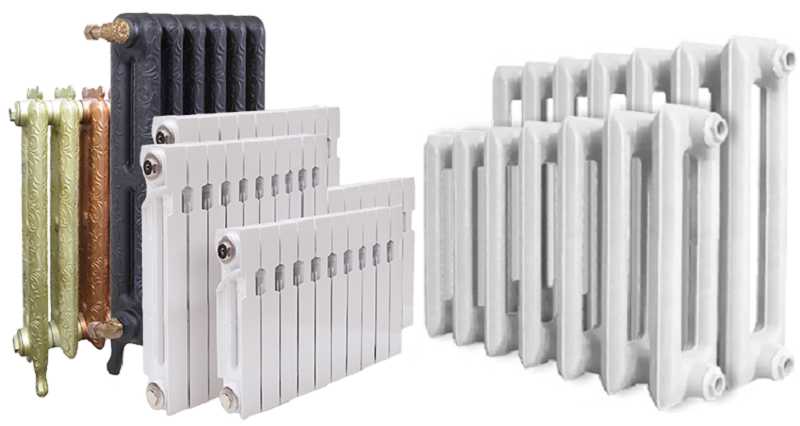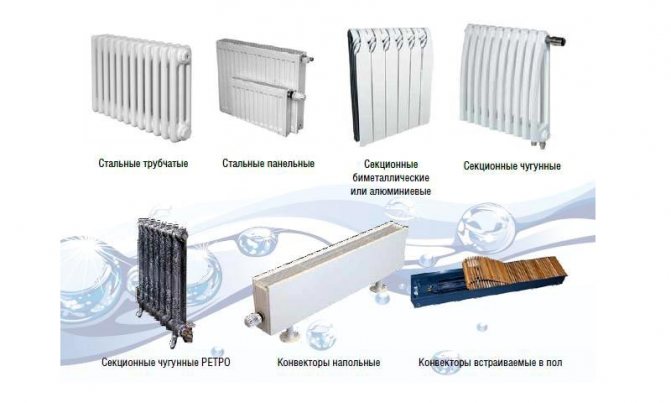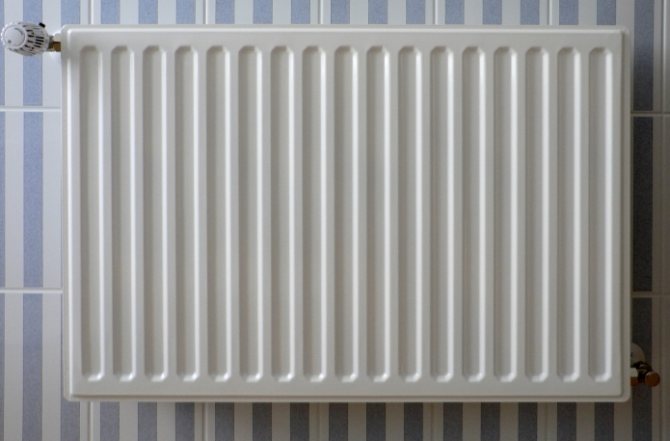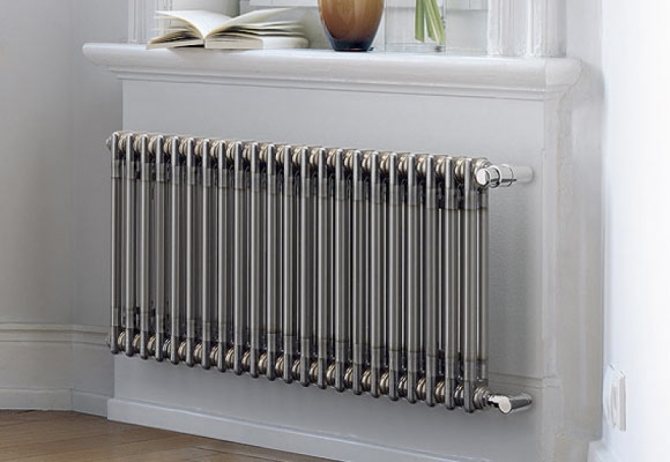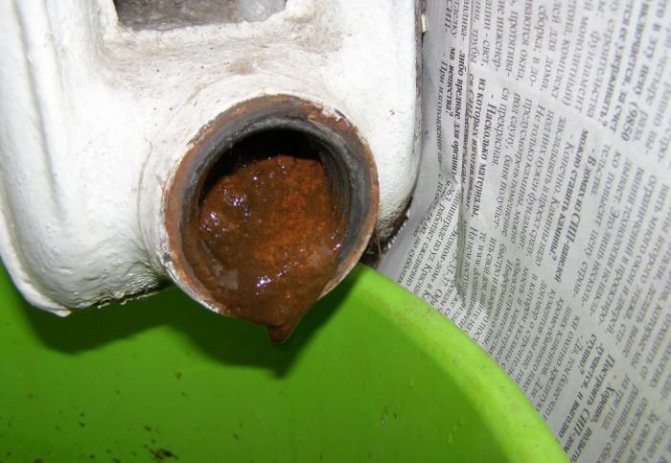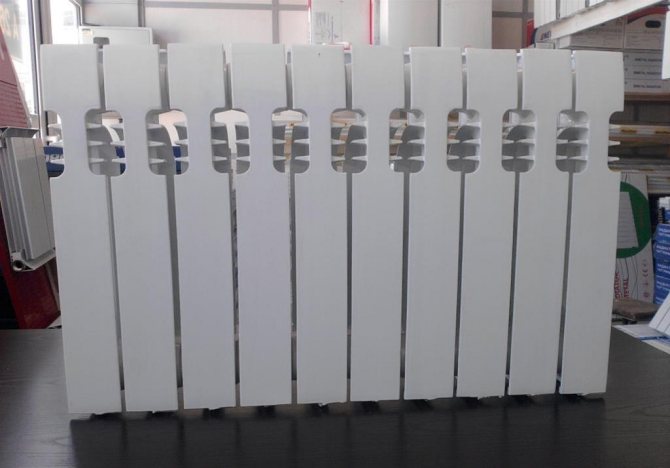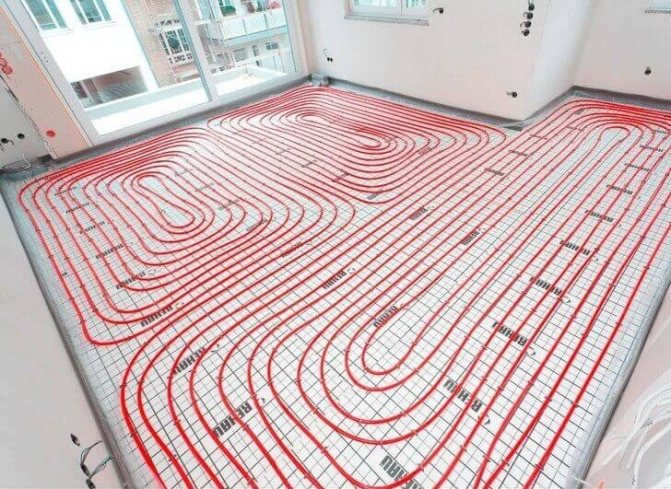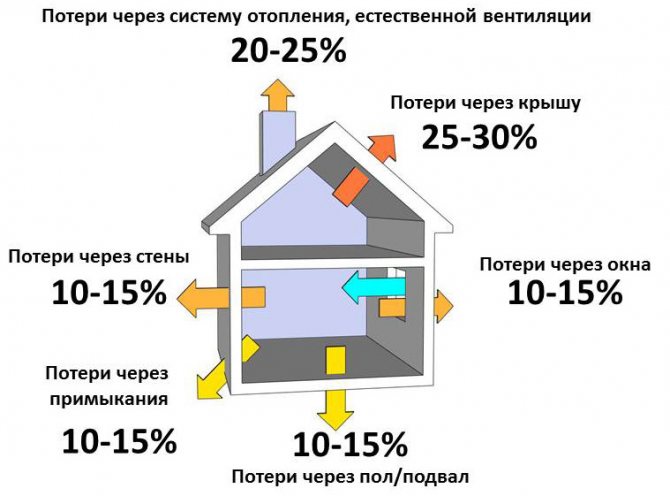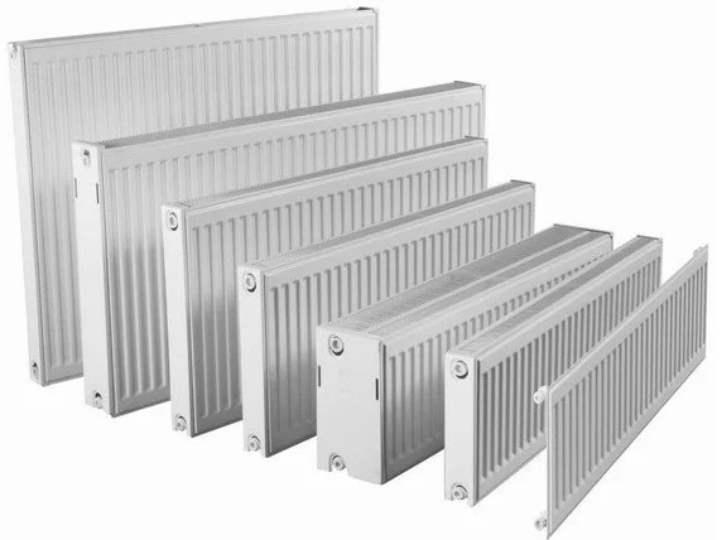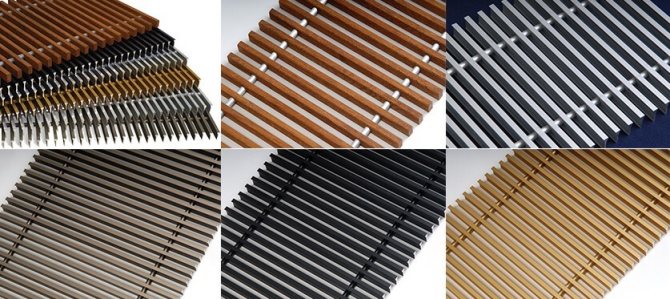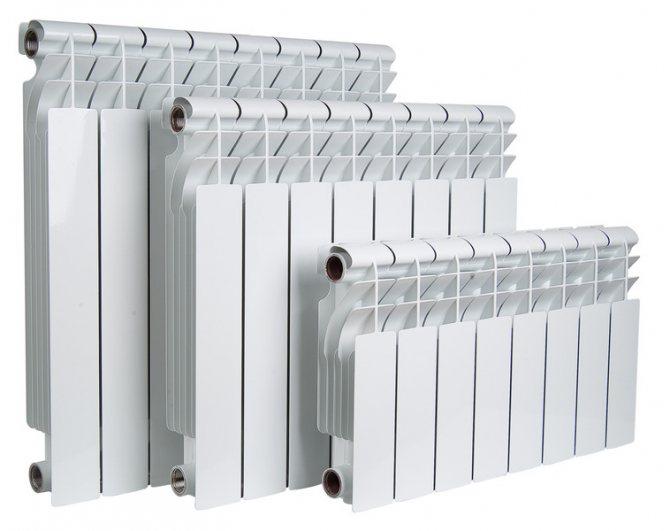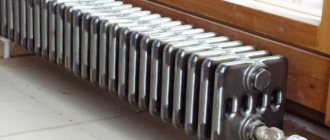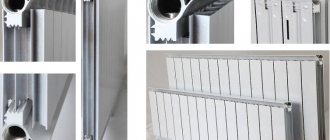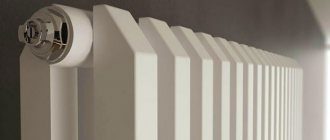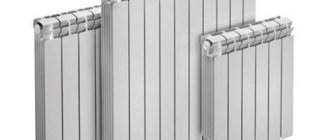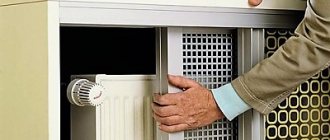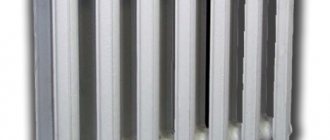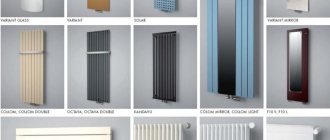Heating equipment mounted on walls and ceilings, including portable heating devices, is to a certain extent an integral part of the interior that needs decoration and occupies a certain volume in the room.
With the development of technologies for the production of heating equipment, units appeared on the market of heaters that do not reduce the useful volume of premises - heating convectors, flush-mounted into the floor.

Group sequential arrangement under a common grate of convector-type heaters installed in the floor along the perimeter of the circular arrangement of panoramic window openings
Floor convectors for heating are widely demanded in spacious administrative and residential premises with glass enclosing structures, as well as public transit facilities (corridors, passages, waiting rooms), where they, without being conspicuous, effectively fulfill their purpose - maintaining the required temperature regime.
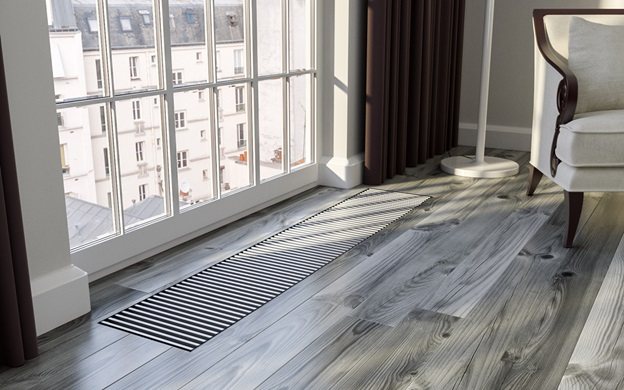

Floor convector heater, mounted along the observation exterior glazing of the room.
Understanding of floor-mounted convectors
Convectors, which are simply recessed into the floor, are a robust rectangular case, often of frame design, sheathed on the front side with a decorative metal grill. A heat exchanger is located in the housing, which heats up, depending on the type of heating device, with a coolant circulating through it or an electric heater.
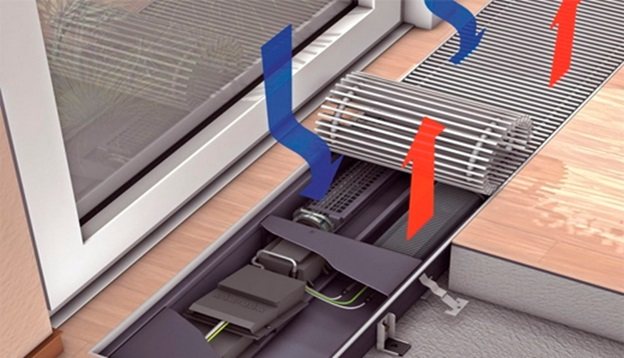

Floor convectors for heating are installed in separate point or common linear niches made in the supporting floor according to the dimensions of the heaters, as well as in the space between the raised floor and the concrete base. To reduce heat loss, the bottom and side walls of the casing of floor convectors are equipped with external thermal insulation.
In the design of such heaters, adjusting screws are provided, which allow precise adjustment of the horizontal position of the front grille plane to the level of the finished floor covering, so that the protruding parts of the case do not create obstacles when walking on them.
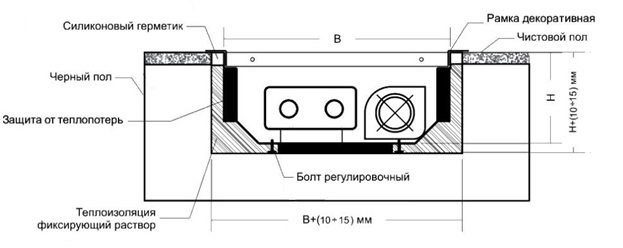

Diagram of the device in the floor of the floor-mounted convector in section
For more efficient use, floor-mounted heaters are placed along panoramic glass enclosures and window openings in order to use convective flows also as a thermal curtain between the room space and the cold glazing surface.
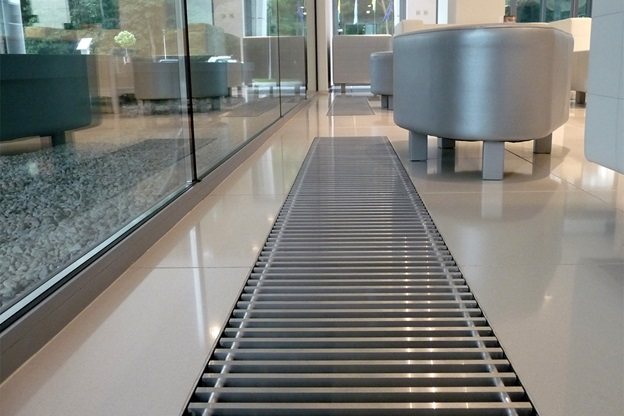

Variant of installation in the floor of the TURBO VKN5 duct convector with a fan.
Can I connect to central heating?
Many people are interested in the question: is it possible to connect a water convector to central heating. Not everyone, but you can. Taking into account several factors:
- If the tube in the heat exchanger is copper, the convector can be connected to a CHP
- Small diameter copper convector pipe. The hydraulic resistance increases. Perhaps the central heating will not "push through" the appliance
- The device should be selected with a significant power reserve, since the CHPP does not always comply with temperature standards.
- The service life of the device is slightly reduced, but it will still serve you for 25 years
If you want to heat your house with water heating convectors, then definitely pay attention to the copper-aluminum options. Each customer to whom we supplied such devices was satisfied.
Types of in-floor heaters
There are many models of underfloor heaters today, and they all differ in some way from each other. If we do not consider the parameters that are of secondary importance, then all heating convectors built into the floor can be divided into two groups:
- water;
- electrical.
Units within each of these two groups differ in size, configuration, power, design of the outer grille, type of convection - natural or forced (with a fan) and performance class.
Water heaters for internal floor placement
Floor water convector is a heating device connected to a central or autonomous heating system.
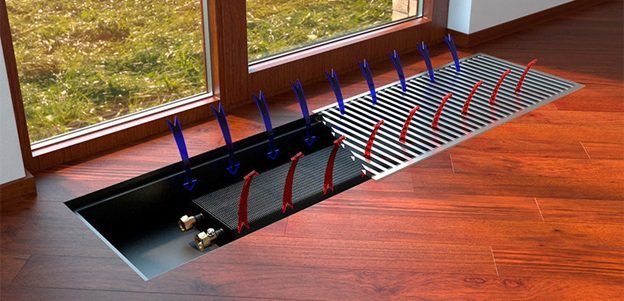

The scheme of functioning of the water floor convector is the flow of cold air from the glazing of the window opening to the heating device, its heating and exit to the room.
A valve is installed at the point of the tie-in into the system, which can be used to regulate the amount of coolant circulating through the floor water heater.
The main element of the unit is a radiator with inlet and outlet fittings, through which flexible hoses or fittings are connected to the heating system, and hot water is circulated through the heat exchanger.
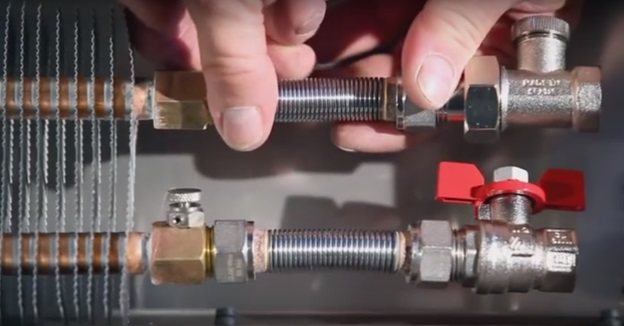

Connecting the radiator of the underfloor heater with flexible hoses.
The radiator is made of a copper tube, on which aluminum fins are made to increase the heat exchange area. Modern water heating convectors are equipped with valves for automatic discharge of air entering the system along with water, which eliminates the formation of air jams and ensures efficient operation of the unit due to a stable rate of circulation of the coolant.
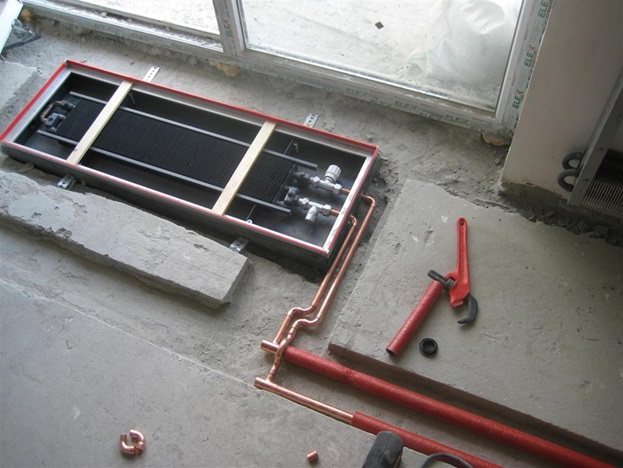

Installation of a water convector in a niche and its rigid connection to heat-insulated pipes in groove-channels.
The intensity of the coolant supply to the convector can be manually changed with a valve at the point of connection to the heating system, but it is more efficient to install a mechanical thermostat at the heater inlet that regulates the flow of hot water into the heat exchanger depending on the temperature of the water in the radiator.
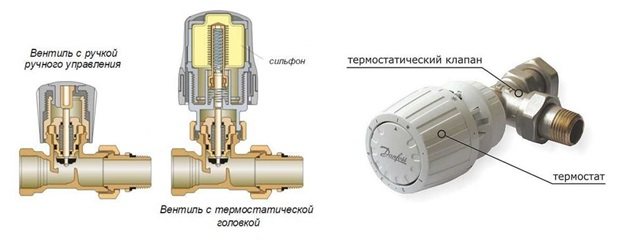

On the left - a schematic sectional view of a manual valve and a mechanical thermostat, on the right - a natural image of a thermostatic head.
Underfloor heaters with natural convection are designed to heat medium-sized rooms (16-25 sq. M.).
To ensure the natural movement of convective flows, the depth of the housing box must be at least 20 cm, and yet even multi-pipe devices of the natural type of convection do not always cope with the role of the main and only heating means, forcing homeowners to additionally use other heating devices.
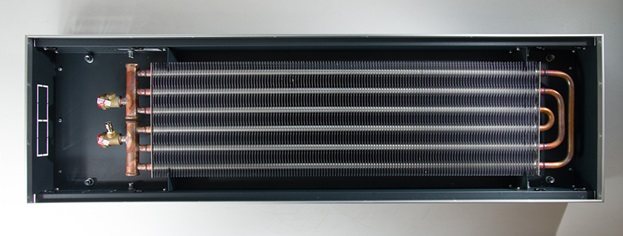

Multi-pipe radiator for a water convector built into the floor with increased heat transfer.
The main advantage of this group of underfloor heaters is safety, due to the absence of factors associated with the use of electrical appliances. Floor convectors for water heating do not need to be grounded, they are not afraid of direct contact with moisture (it often happens on the floor), the surface temperature of these units is safe for humans with short-term contact, and the outer grille can be made of valuable wood species.
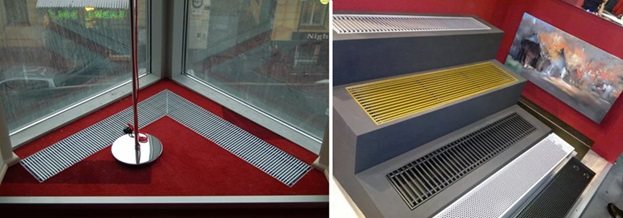

Arrangements for floor-mounted heaters: on the left - corner placement, on the right - installation in steps.
The cost of such devices, depending on power, class of technical equipment and performance, ranges from 20 to 100 thousand rubles.
Important! When connected to a central heating system, water heating convectors built into the floor are heaters that do not require energy costs (with the exception of models with a fan).
Forced convection water heating devices
Equipping the device with a fan accelerates convective flows, but at the same time reduces their temperature - the air heats up less due to the shorter duration of contact with the heat exchanger. Therefore, radiators of underfloor heaters with forced convection are made of a more complex design (two-three-four-pipe), up to 3 meters long, which prolongs the contact of air with the heat exchanger and increases its temperature at the outlet of the unit.
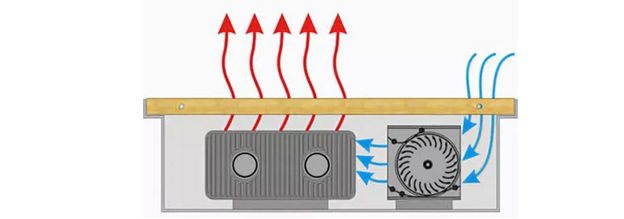

Conditional diagram of the movement of convective flows in a floor convector with a fan.
A forced-type convection heater built into the floor is several times more efficient than models without a fan, therefore, they are used in large rooms, and the energy consumption of such devices is low due to the absence of electric heating elements. However, the complexity of the design of tangential fans, which are most often used in modern heating units, (with a low noise level, operating from a voltage of 12 V) or the equipment of the heater with several ventilation mechanisms of the traditional, diametrical type, the design significantly increases the cost of the convector, which can range from 50 to 160 thousand roubles.
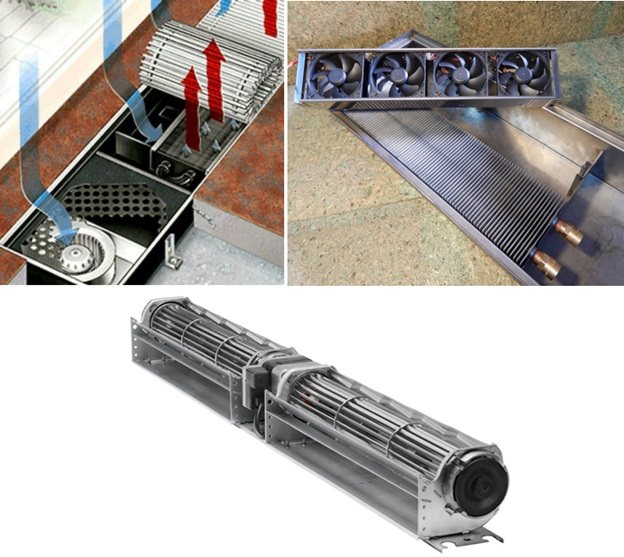

Varieties of equipping floor convectors with fans: on the left - single, on the right - block, below - tangential fan.
The thermal power of a water heater is determined by the dimensions of the unit, the temperature of the supplied heat carrier and the type of convection, but the required calorific value (Qt) is determined by a special formula:


The formula for calculating the required power of the convector with the decoding of the constituent elements.
However, the required heat release power also depends on other factors - the region, the dimensions of the room, the glazing area, the degree of thermal protection of the enclosing structures, etc., therefore, more often its value is determined using special tables that take into account certain operating conditions.
Electric underfloor heating units
These units differ from water floor convectors in the way the heat exchanger is heated and, of course, in the design.
The heat exchanger is a heating element placed in a finned casing. Thus, electric underfloor heaters are to some extent infrared heaters, the basic principle of which is based on convection.
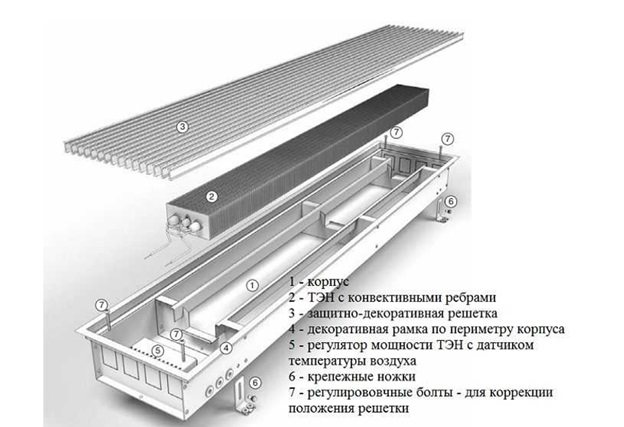

Schematic device of an electric underfloor heater of natural convection type.
The presence of an electric heating element in the unit allows it to be connected to an automatic heating control system in order to minimize human involvement in the operation of the heater. For this, a remote mechanical thermostat is installed in the power supply circuit of the unit, which turns off the device when the temperature in the room reaches the set value.
Important! Automatic temperature control is effective only when installing units with forced convection, since the fan provides a uniform air temperature in the room and allows the temperature sensor to record its real value.
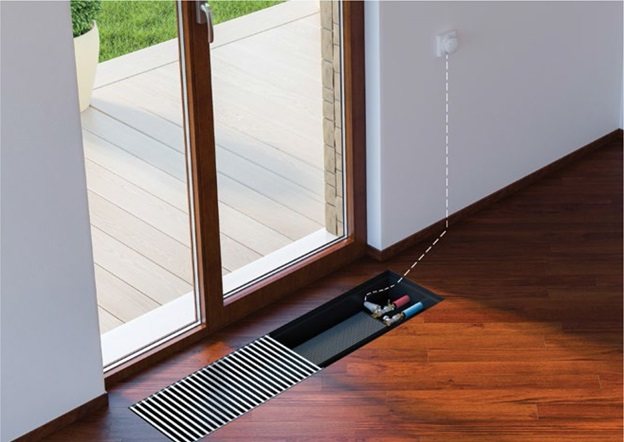

Option of wiring the thermostat to a floor-mounted electric heater.
All models of electric underfloor appliances are equipped with a temperature sensor inside, which protects the heater from overheating.
Important! When installing electrical heaters, the distance from the unit to the glazing plane should be no more than 300 mm - if this value is exceeded, nothing will prevent the formation of condensation on the glass, which, flowing down to the floor, can accumulate in the niche where the heater is located.
The height of the ceilings of most apartments does not allow painlessly filling the floor with a layer of concrete, which allows the underfloor heater to be drowned. It is also unrealistic to cut the floor in the interfloor to such a depth. Therefore, an electric, and, moreover, a water heater, built into the floor, cannot be found in an apartment building. But floor convectors, similar in design, are produced, which do not require installation of mounting niches in the floor for installation.
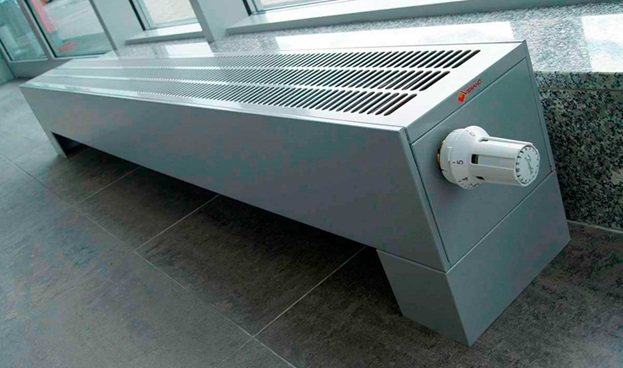

With such heating devices, both electric and water, it is possible to effectively heat spacious rooms of apartments and utility rooms for industrial purposes.
Important! The use of electric floor convectors is associated with sensitive electricity costs, but there is a way out of this situation - the use of a 24 V DC network, which will not only reduce costs, but also increase the safety of the heating unit.
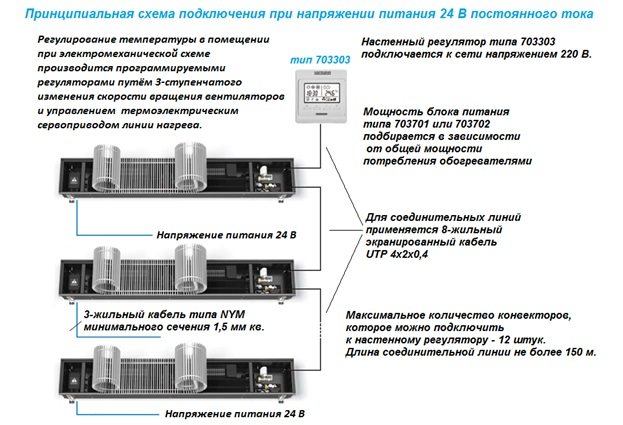

Schematic connection of the floor convector to a 24 V network and a thermostat
Fan coil units
On the basis of floor-mounted convectors, another type of heaters is produced that work not only for heating, but also for cooling. At the place of installation, in addition to the interior, they are also wall, floor and ceiling. The Russian-language name of such a unit is fan coil, from the English fan-coil, which means fan-heat exchanger in translation.
This definition means a combination of two devices working in pairs:
- fan coil unit itself - a floor-mounted mechanism for influencing the air temperature, including one or more heat exchangers;
- chiller - a separately installed unit for cooling the coolant (water) supplied to the fan coil during the summer period.
Fan coil units are single-circuit (two-pipe) and double-circuit (four-pipe).
In single-circuit units, hot water from the central heating system or antifreeze from the heating boiler is driven through the heat exchanger in winter. In the summer, cold water from the chiller passes through the same heat exchanger - a device that does not use freon or another gas with identical characteristics for cooling.
In double-circuit fan coil units, the movement of hot and cold heat carriers is carried out through separate heat exchangers.


Schematic representation of a double-circuit fan coil unit (without chiller).
Thus, depending on the set mode, the fan drives the room air through a hot or cold heat exchanger.
There is no universal installation scheme for the chiller-fan coil system pair, its installation is possible in any room, but the installation project will be tied to specific conditions.
One chiller with the correct capacity can be connected to a system of many fan coil units (wall, ceiling, floor) serving several rooms and even buildings.
Such a system for ensuring the required temperature regime in the premises is used mainly in public and industrial buildings, as it is difficult to maintain and expensive.
Features of installation and operation
Water heating convectors operate only from forced heating systems. Due to the small flow with high resistance, gravity systems will not be able to provide the required heat. And most likely the system will not work at all.
In terms of installation features, they are completely identical to radiators. The most popular options for mounting schemes: two-pipe and beam (collector).
Copper-aluminum convectors can be directly connected to central heating. The only thing is that the service life may decrease due to the alkaline medium of the heat carrier in the CHP system.
Advantages and disadvantages of floor-mounted convectors
We list the positive and negative features of floor heaters without dividing by the type of energy carrier used and listing the characteristics inherent in all convectors as a whole.
Pros:
- due to the location of the unit, the lowest, coldest layers of air are heated;
- the installation of devices does not reduce the useful volume of the room;
- quick exit to working mode;
- preventing the formation of condensation on the glazing.
Minuses:
- with high ceilings, it is not effective to build in units of a natural type of convection into the floor - convective currents of heated air are concentrated high under the ceiling and cool down before filling the current volume of the room;
- convection from the level of the floor covering initiates intensive movement of dust in the air, which is constantly present in the air during the operation of the heater;
- inconvenience of everyday care of niches in which household waste accumulates.
What should be considered when choosing a device?
So, when choosing water-based floor heating structures, pay attention to parameters such as:
- material;
- heater power;
- equipment size;
- availability of a warranty from the manufacturer.
Corrosive material significantly reduces the service life of floor heating equipment, therefore, preference should be given to structures made of copper and aluminum.
To connect the device to a centralized system without any problems, it must operate at a pressure of at least 12 atm. Convectors installed in the floor are more efficient in private houses, where the pressure may not exceed 2.5 bar. It is better to carefully study the instructions and determine the pressure parameters provided by the manufacturer.
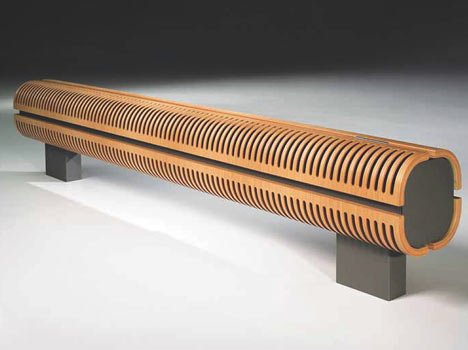

The figure shows a battery with a floor mount.
The height of the ceilings in the room can also affect the power of the selected device. High altitude is a reason to purchase equipment with high power.
The manufacturer of quality products gives the equipment a warranty of at least 5 years.

